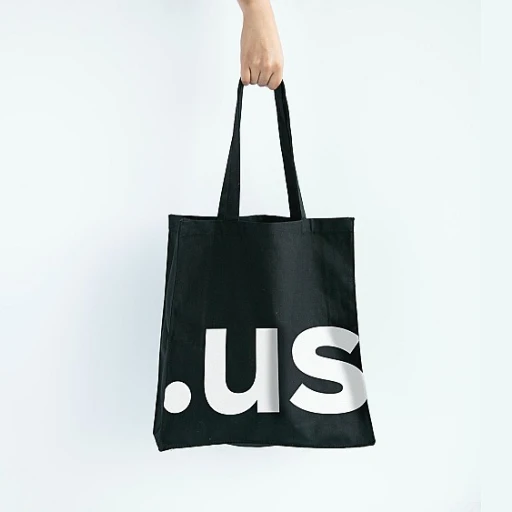
Understanding the Role of Stepper in Onboarding
The Vital Role of Steppers in User Onboarding
In the ever-evolving landscape of user onboarding, creating an intuitive and streamlined process is paramount. A well-designed onboarding tour not only captures the user's attention but also ensures they fully understand your app or platform's features and functionalities. Here, the concept of a stepper comes into play.
Steppers serve as a visual guide, dividing the onboarding process into manageable and discernible steps. This guided approach can significantly enhance the user experience by creating a sense of progression and achievement as users advance through various stages of learning. By putting a label step on each section, users can keep track of where they are and what to expect next.
The incorporation of visual indicators such as icons and button groups helps in navigating the process effortlessly. Steppers not only aid in improving navigation but also reduce the cognitive load on users, making complex processes simpler by breaking them into digestible pieces. The visibility of progress with a stepper adds motivation for users to complete the process.
The integration of a stepper in onboarding isn't purely aesthetic; it's a function demo of user-centric design. Ensuring every step content is clear, concise, and provides value is fundamental to a successful onboarding experience. For a deeper dive into enhancing onboarding with strategic data use, consider exploring a three-level data UX approach.
Introduction to Mantine Stepper
Exploring Mantine Stepper
The Mantine Stepper is a versatile react component that is gaining traction in the web development community, especially for businesses focused on refining their onboarding tour. As an open source tool, it offers flexibility and ease of customization, making it a suitable choice for developers. By utilizing Mantine Stepper, you can create an intuitive, segmented journey for your users, offering them a step-by-step experience that is both engaging and informative. Incorporating this component into your application involves familiarity with React, a widely-used JavaScript library for building user interfaces. The Mantine Stepper allows you to present content in distinct steps, each with its own label step and accompanying step content. React developers can conveniently import button and icon components to enhance the user interaction at each stage of the process, creating a tailored and efficient flow.Leveraging Component Features
One of the standout features of the Mantine Stepper is its adaptability to various design frameworks such as Tailwind CSS. By engaging with Tailwind CSS, developers can effortlessly implement a visually appealing and responsive design structure. The flexibility in adjusting components to align with your brand’s aesthetic is uncomplicated; you can justify center elements, provide a button group alignment, and present a center button to highlight actions users need to take. For those diving into the technicalities, the Mantine Stepper also supports an interactive demo to help developers visualize their component implementation. Through this function demo, you can test different configurations in real-time, ensuring the final outcome aligns with your expectations. The demo return feature allows you to iterate quickly, promoting a smooth development process. Additionally, Mantine’s robust documentation—available on platforms like GitHub—provides an extensive library of examples and guidance to assist developers, whether they're adjusting the data structure or tweaking the design layout. This support is integral to navigating challenges that may arise, particularly when integrating social media elements or creating cookie consent forms. The developers' ability to experiment with title step customizations and step descriptions enhances the versatility of the Mantine Stepper for diverse onboarding scenarios. For those interested in exploring how data-driven UX can further enhance onboarding processes, consider reading about the three-level data UX approach for additional insights.Designing an Effective Onboarding Process
Crafting an Inviting Experience: Steps for Effective Onboarding
Designing an effective onboarding process is crucial in turning first-time users into loyal customers. To do this efficiently, it's essential to integrate clear, informative, and appealing elements that guide the user seamlessly through the app or platform. The Mantine Stepper can be a game-changer here, as it helps structure the onboarding tour into digestible segments, allowing users to absorb information without feeling overwhelmed.
Here's how you can leverage this tool:
- Clear Step Definition: Break down your onboarding process into distinct steps, or stages. Each step should have a title step that gives users a preview of the step content they will encounter. A clear, concise step description can make a significant difference in user comprehension.
- Efficient Import of Components: Make sure to import button and other necessary components clearly at the start of your coding process in React. Properly importing ensures that the label step and user interface are functioning as desired.
- Intuitive Navigation: Use button group and icon features to allow users to easily move forward or return to a previous step. This navigation should be intuitive, with buttons placed in a center button position for easy access, and aligned using tailwind css for consistency.
- Engaging Visual Elements: The combination of demo visuals and tailwind styling can enrich the user's journey. Moreover, open source resources from platforms like github offer endless opportunities to customize the visual appeal.
Additionally, don't forget about the importance of data in personalizing the onboarding experience. By utilizing user cookie consent and integrating onboarding software, you can refine the content based on user behavior and preferences. This approach not only improves usability but also enhances user engagement, ensuring your onboarding process stands out.
Implementing Mantine Stepper: A Practical Example
Integrating Mantine Stepper in Your Project
To begin the implementation process of the Mantine Stepper in your onboarding project, you'll first need to import the essential components. In a React environment, import theStepper component from Mantine. You'll also want to include Button and Icon components, as these will enhance the interactivity of your onboarding steps.
jsx
import { Stepper, Button, Icon } from 'mantine/core';
Configuring the Stepper
The next step is to set up the initial configuration. The Mantine Stepper comprises multiple steps, each carrying a description, title, and content. Utilize thelabelStep and stepContent for clear navigation and information display.
jsx
Adding Functionality
In addition to displaying informative content, ensure your onboarding steps can interact effectively with users. IncorporatebuttonGroup and centerButton to guide users through each step conveniently. For style consistency, consider using Tailwind CSS to center and justify these elements.
jsx
Function Demo
Providing users with a demo can significantly improve their understanding and experience. Create a simple function demo to show how users will navigate through the steps. This can be as straightforward as simulating the step advancement when a button is clicked. jsx function nextStep() { if (activeStep current + 1); } }Deployment Considerations
Before committing these changes, test your app thoroughly to ensure that all components work harmoniously. Utilize GitHub for version control, tracking your progress and troubleshooting any issues that arise during the deployment phase. After a successful implementation, encourage feedback through social media or an inbuilt feedback form. This can inform necessary adjustments and validate the user experience quality you have aimed to achieve.Common Challenges and Solutions
{"Overcoming Common Obstacles in Stepper Utilization
When integrating a Stepper into your onboarding process, such as the Mantine Stepper, organizations often encounter some challenges. However, addressing these issues effectively can significantly enhance the user experience. Here are some common obstacles and their solutions:- Consistency Across Components: While implementing an onboarding Stepper using Mantine, ensure all related components like the button, icon, and footer maintain a consistent design. This can be achieved by utilizing design systems like Tailwind CSS to create a cohesive look and feel.
- Handling Data Properly: Storing and managing data as new users go through each step of the onboarding process is crucial. Use React to manage states and effectively control the data flow across your web app. Properly importing and exporting necessary components from GitHub can streamline this task.
- Responsive Design: In today’s mobile-first world, your onboarding Stepper must be responsive. Use Tailwind's justify-center utility to ensure that content is properly centered, making the app accessible on devices of all sizes. This involves maintaining a layout that adapts to different screen dimensions without losing clarity.
- Engagement and Retention: Add interactive elements such as next and back buttons, a button group, or a center button to keep users engaged and willing to advance through steps. Demo it during your development phase to see which interactive designs work best.
- Providing Clear Instructions: Ensure that the label step, step content, and step description are clear and concise. Users should easily understand what each step entails and how it contributes to their onboarding tour. Collaborate with your UI/UX team to craft intuitive text and visual elements.
- Monitoring and Feedback: It’s important to have mechanisms, such as a cookie consent, to collect user feedback during and after completing the onboarding process. Analyzing this feedback will help you iterate and improve your onboarding strategy, focusing on areas where users face blocks or challenges.
These solutions, when executed properly, contribute significantly towards building an effective onboarding strategy that leverages the full potential of the Mantine Stepper. Combining technical implementation with user-centric design will undoubtedly lead to improved onboarding experiences.
Measuring Success: Evaluating Your Onboarding Process
Key Metrics to Evaluate Onboarding Success
To ensure that the onboarding tour with Mantine Stepper effectively enhances the user experience, it is critical to measure its success through various key metrics. Here's how you can assess the onboarding process:
- Completion Rate: Monitor the percentage of users who complete the onboarding tour from the first step to the last. A low completion rate might suggest that users encounter difficulties understanding the process or lose interest mid-way.
- User Engagement: Evaluate the engagement by observing interactions with the components such as buttons, icons, and any text content. Pay attention to areas where users hover or click frequently, as these might indicate points of interest or confusion.
- Feedback Collection: Incorporate a footer or button group at the end of the onboarding that invites user feedback. This can be as simple as asking users to rate their experience or providing an open text field for comments.
- Time Spent: Analyze the time users spend on each step content. Significant linger time may suggest complexity or insufficient information. Concurrently, too short of a period could mean users are skimming and potentially missing essential step descriptions.
- Adoption Rate: Track how many users actively utilize the features introduced during onboarding. A high adoption rate signifies successful knowledge transfer during the onboarding.
- Error Rates: Evaluate the number of errors or issues users encounter while going through the onboarding process. A higher error rate might indicate confusing instructions or poor interface design.
Utilize tools like React, Tailwind CSS, and GitHub for implementation and data handling. Leveraging these tools can make it easier to import components and monitor real-time data, giving you deeper insights into user behavior.
By methodically analyzing these metrics, organizations can refine the onboarding experience to better engage users, ensuring that every button data and react component serves its intended purpose. Continuous improvement based on reliable function demo data will enhance the journey as users transition from first impressions to adept app users, maintaining their interest from the open source demo to app mastery.












